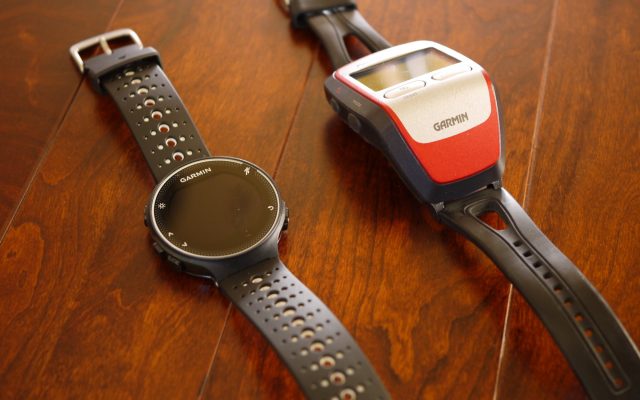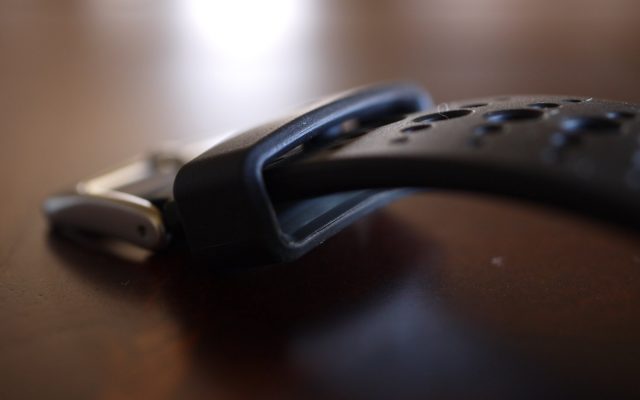
After a decade of faithful service, it was time to retire my old Forerunner 305. While the electronics still work, the silicone watch band failed back in December. Due to poor running weather and an injury, I put off replacing it until recently.
Sticking with the Garmin family of Forerunners, I had several options for replacing the 305. I considered the 230, 630, 725, and 920XT (the true successor to the 305) in my search to replace my 305. I ended up selecting the Forerunner 230 over the others for a few reasons.
Both the 630 and 725 have a built in heart rate monitor. Unfortunately, this is not flush with the back of the device—a non-starter for me. Additionally, both the 630 and the 725 have touchscreens, which on earlier models have a history of being unresponsive—I have witnessed this first hand. As for the 920XT, it is a little on the pricey side (though it apparently can be found on sale for around 220USD).
The Watch
Spec wise, the Forerunner 230 has a decade worth of technological progress over the 305. This results in a watch that is lighter, physically smaller, but has better battery life and a larger display. Even better, the Forerunner 230’s GPS locks significantly faster than the Forerunner 305. And, for the impatient, after a few runs, the built-in, self-calibrating pedometer can fill in the gap at the start of a run before a GPS lock is established.

Forerunner 230 band retainer
Garmin also improved the watch band on the 230; it is wider and slightly thinner than the band on the 305. More importantly, the little strap retainer has a peg that prevents it from slipping during a run. This helps the watch fit when your wrist is really between “sizes” on the band.
The Cradle
Since introducing the more rounded Forerunners, which the 230 is a member of, Garmin replaced the docking cradle with a pogo pin clip. This design change allowed the pins to be recessed more on the 230 than they were on the 305. However, the clip, containing a spring so it can clip onto the device, is mechanically more complex than the old cradle, and may not last for 10+ years. Finally, it lacks the satisfying “click” that the Forerunner 305 has when attaching to its cradle. These are really just nits, but are worth pointing out.
Other Changes
Rather than defaulting in the activity view (as the 305 did), the 230 displays the time on power up. This is not bad if the intent is to use the 230 as a daily “smart watch”. However, that is not the traditional market of the Forerunner line.
Unlike my 305, the 230 will call out each completed mile (vibrates, chimes, and display shows the split for that mile). After completing a run, the 230 will display “awards” if you hit a PR in any of several metrics (so far I have seen distance, fastest mile split, fastest 5k, fastest 10k, and average pace).
Software
Back when the Forerunner 305 was released, Garmin Training Center was the application for managing run history. It had a somewhat clunky interface, with a map that lacked the requisite fidelity to make sense of all but the longest runs. Since then, Garmin has moved to two different apps; Garmin Express and Garmin Connect Mobile.
There is a Garmin Connect Mobile app for Windows, at one point I did have my Forerunner 230 connected via Bluetooth. However, in the middle of setting up my profile, I moved the app to my touchscreen monitor, which caused it to hang and subsequently crash. Afterwards, the Forerunner 230 and my PC refused to talk to each other over Bluetooth.
So, I moved on to Garmin Express. This Windows program synchronizes a Garmin device with Garmin Connect (the successor to MotionBased). Garmin Express supports most (if not all) Forerunner devices including the Forerunner 305 and Forerunner 230. Thus, I am able to manage both of my Forerunners from one application. In this case, I was able to upload my activity history that was still on the Forerunner 305.
As for Garmin Connect, it is a major improvement over Garmin Training Center. The activity screen layout is greatly improved, the graphs are more useful, and Google Maps is employed as the base for plotting routes. As a nice touch, Garmin Connect will recall the weather conditions during an activity.
Conclusion
Overall, I am happy with the Forerunner 230. It is a nice step up from the Forerunner 305: it is smaller, it is lighter, it has a larger screen, and it records step cadence (the one new feature I am really interested in). With any luck, it will last a decade like the Forerunner 305 did.
-John Havlik
[end of transmission, stay tuned]


